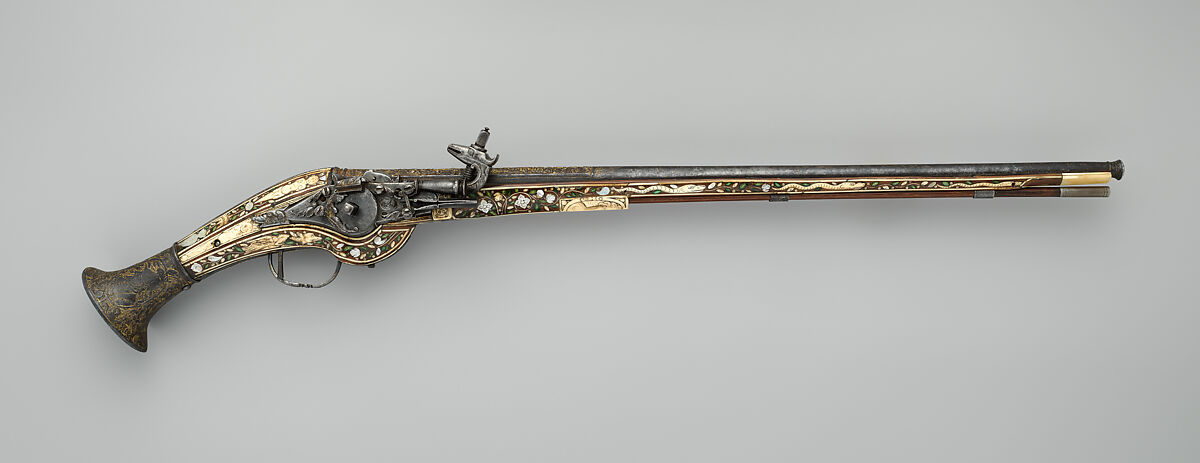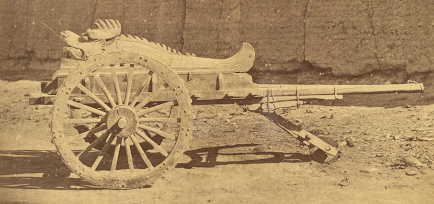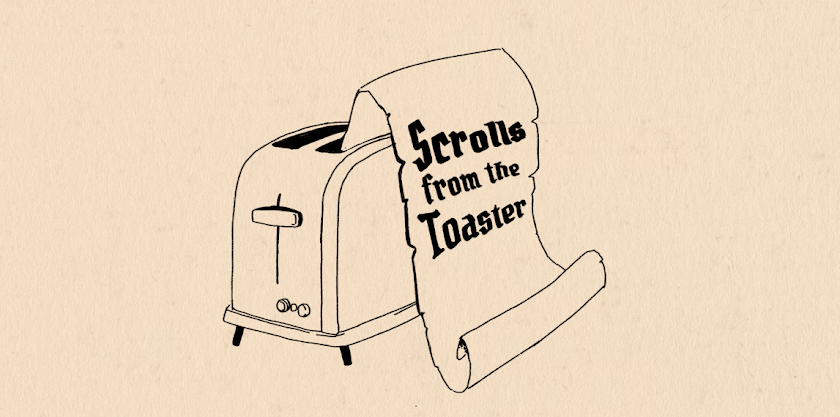This week I wanted to talk about firearms in my setting, Hodas. We use the rules presented in Crawl #8 to cover how they function and the rules for aiming and duels. If you're not interested in the body of the post talking about firearms in the setting, then scroll to the bottom for the stats on some alternative options for black powder weapons.
Notably, my setting is in the black powder era of firearms. This is because it's the tech level I wanted for them at this point, but also because a decision one of the players made locked us into the era. He decided that his chosen people, the race of bird people known as Featherfolk, would be the only people who could produce the black powder. Other races can create the weapons themselves, plenty of gunsmiths exist among the Goblins, Minotaur, Humans, and the odd Ooze but they can’t make the powder. You might ask why that is, because gunpowder is the kind of thing that shouldn't stay a secret; others would want that power. Well, when we built the world using Wasteland Without Epithet, he said black powder was their secret. I spent a long time thinking that one over: how on earth did they protect that secret? They are a people of shrewd contracts, but if someone decided to break a contract and face the penalties, then it could get out. Ultimately, I settled on something more flavorful to his chosen people.
Matt said that the Featherfolk were a people of bureaucracy and contracts who even made contracts with the spirits they believed were in the world around them. So my solution was simple: the Featherfolk would create black powder by making a contract between simple earth and fire spirits, promising to use them in a work of art. They left the meaning of work of art ambiguous enough to create a loophole for themselves. The powder is loaded into one of these beautiful wheellock weapons:

By using the spirits literally inside these intricate works of art, they exploit a loophole that the spirits never see coming. This means that firearms, while available in the setting, remain expensive and slow. They remain at this level because the real world progression of firearms, such as flintlock, percussion caps, cartridges, and casings, is less viable, because it's more about tricking the spirit than making the gun easier to use. This also means that firearms are works of art first and weapons second, meaning that they are covered in ornamentation and over-designed, because the more this is clearly art, the tighter the loophole holds.
Another problem I faced is that Hodas is mostly islands, with only a few large land masses, as determined by the players. This means there is a rich sailing culture and lots of pirates. Ship-to-ship combat in a world with black powder feels like it should have cannons. Any judge could just say, "No, I'm not including cannons," but that didn't feel good to me. Cannons can absolutely be a work of art.

So my solution here was to say, "Cannons that are also intricate enough to have the scaled-up wheellock and be a work of art are prohibitively expensive." This didn't answer what people used in ship-to-ship combat. I liked boarding because that is fun and gets the players into a fight, but it can't all be boarding. A world where sailing was as old as life had to have naval weapons. So I settled on cannons being rare, with smaller ones like swivel guns, large deck-mounted crossbows such as the Roman scorpion (often with a rope attached to drag the other ship into boarding range), or fire lances made by the setting's goblins, who are masters of alchemy. Adventurers will quickly learn that even a single Rampart Gun or Fire Lance can decide a boarding action. Pirates love cheap goblin fire lances despite the danger, while navies prize the rare Featherfolk cannons as prestige symbols.
Where we really had fun was thinking about what interesting black powder weapons were out there that could be added into Hodas, allowing for a wheellock mechanism to keep it on theme. The short answer is: "Anything you want, it's your game." But when we look at Crawl #8, it covers what is important: pistol and rifle. Most things comfortably fall under one of those two as a simple blanket. So we wanted to get gonzo. We looked at stuff like the duckfoot pistol, the volley gun, and the blunderbuss to create some unique black powder options. Here is the list of what we came up with for Hodas:
Note: The variants and special weapons below should be hard to acquire. Not every gunsmith makes organ guns, but they might know someone they can send you to. Because each weapon needs to be a work of art, the larger or more complex the weapon, the more difficult it is to make, meaning that steps outside the norm of the pistol and rifle should be rare, with a few exceptions such as the blunderbuss.
Pistol: Unchanged from Crawl #8, always at least 100gp. These will be intricately etched and extremely detailed, making it likely they will be more expensive.
Rifle: Same as pistol
Blunderbuss: This gun, shorter than a rifle, longer than a pistol, and as accurate as neither, is flared at the end, making its shots scatter and loud. Often the end is carved with the maw of some creature; wolves and bears are popular, but different gunsmiths around the world will make different versions. When the blunderbuss is fired, any foe within 100 ft, with 4 int or less, and able to feel fear, must make a morale check or flee. The Judge will determine the DC of the morale check the foes must make. Optional: Judges may rule that when fired in a hallway or tight quarters, like those of a dungeon, this gun's range is reduced to a single 10-foot cone, with its attack rolled against all creatures in the cone, including allies.
Damage: d10; RoF: 1/3; speed -4; Range: 30/60/90; Ammo: 1; Weight: 10lbs; Cost: 150gp
Volleygun: Typically used in naval battles, this gun resembles a collection of 7 barrels fused together, but is actually a single heavy piece. The volleygun is heavy and takes a long time to reload, an entire turn to pack and load with all its bullets and wind its wheel. They are mostly used in naval battles as an opening against boarders before being dropped and steel is drawn. They are rare among adventurers because they are heavy, and taking one into a dungeon often isn't worth the trouble. A volleygun's ammunition is fired all at once in a single attack. The person firing it makes 7 attacks, each one rolled using a d14 instead of the character's action die. They may fire at up to 7 targets, as long as they are all within 5 feet of the first target fired on. They are often decorated with swarm motifs, such as wasps or other stinging insects. Optional: cheaper and more expensive versions of this weapon exist with more or less barrels, up to 9 or as little as 3. each barrel below 7 removes 20gp from the cost of this weapon. each barrel above 7 adds 20 gp to the cost.
Damage: d8; RoF: 1/turn ; speed -4; Range: 80/160/240; Ammo: 3-9; Weight: 25lbs; Cost: 300gp
Duckfoot pistol: This strange-looking pistol resembles its namesake, bearing 4 barrels, none of which are pointed forward. Due to its unusual construction, it cannot be aimed and has an extremely short range. The tradeoff is that each barrel fires simultaneously, allowing the wielder to make a single attack against up to 4 targets that are within 5 feet of each other. Because of its complex loading mechanism, it takes 1 turn to reload and cannot be done in melee.
Damage: d8; RoF: 1/turn ; speed 0; Range: 10/20/30; Ammo: 4; Weight: 5lbs; Cost: 100gp
Rampart Gun: Also known as swivel guns, these are massive weapons that need to be mounted or braced to be fired safely. They see a lot of use mounted on naval ships or ramparts. They hit hard and deal double damage to ships and structures they hit. Typically, these come already mounted to a surface and cannot be moved, but some adventurers have developed a large tripod which can be used to deploy the weapon anywhere, taking only one round to set up the tripod and ready the weapon. If a character attempts to shoulder-fire a rampart gun, they immediately take 1d6 damage and fall prone (only the extremely sturdy Minotaur may shoulder-fire this weapon without ill effect; Judges may rule that exceptionally strong characters can also shoulder-fire this weapon).
Damage: d12; RoF: 1/3 ; speed -4; Range: 90/180/270; Ammo: 1; Weight: 50lbs; Cost: 350gp
Pepperbox/Harmonica: Not an entirely unique weapon from the wheellock pistol or rifle, the pepperbox variant simply equips the existing pistol or rifle with a rotating barrel, which must be manually rotated, and allows the character to achieve a fire rate of 1 per round. The catch is that firing this each round agitates the earth spirits inside the powder, increasing the critical failure range by +1 for each round this weapon is fired without resting for at least one round. This modification can only be applied to the pistol or rifle. This can have anywhere from 3 to 6 barrels. The pepperbox variant with 3 barrels costs twice the price of the base firearm, and an additional 20 gp for each additional barrel.
Double Barreled: This is another variant of the standard pistol and rifle. A second barrel is added to the weapon, which allows it to be fired more than once before needing to be reloaded. This allows the wielder to either take one shot for two rounds without reloading or take two shots in a single round using the two-weapon fighting rules. The wielder cannot benefit from Aiming if they opt to fire two shots in a single round. This variant costs 50% more than the base weapon.
Goblin Fire Lance: Not a true firearm, but often used in their place on ships. the fire lance has a short range but projects a line of fire derived from a thick gel kept under pressure. the gel is put into a chamber and air is pumped into the chamber by hand in order to create pressure. the tip of the lance has a piece of rush, coated in animal fat to burn slowly but consistently, fixed to the tip. when the pressure is released the gel is sprayed out of the tip and ignites when it hits the burning rush, creating a horrifying spray of fire that clings to anything it hits and burns until smothered. the drawback of these weapons is that, unless the same goblin (or group of close goblins who have worked together for a long time) brews the gel, loads, and fires the lance, there is a 10% chance it will explode and cover the user in fire while causing them to take 1d10 damage from the explosion then 1d6 from the fire until they smother it (usually by jumping into the water). If the same goblin brews the gel, loads, and fires the cannon there is only a 1% chance of this happening each time it is fired. The fire lance releases a line of fire 80 feet long and deals 1d10 to anything in that line and lighting it on fire to deal 1d4 each round until the fire it put out. Because of how dangerous the fire gel is, even the goblins of Drebas won't use these weapons in city defense, at sea the fire can be smothered but on land you risk burning down your own city.
Organ Gun: More artillery piece than personal firearm, these weapons look like a pipe organ turned on it's side. consisting of 10 or more barrels designed to fire all at once, this is intended to be an anti-personnel weapon used against formations and crowds. These are unwieldy and massive, its extremely rare for an adventurer to use one due to its need to be towed and it's impracticality in dungeons and exploration. When this weapon's wheelock mechanism is triggered it deals its damage automatically to all creatures within a 60 foot cone. This weapon takes 1 turn to reload alone or 5 rounds to reload with a trained crew. value 500gp, Damage: 2d10 (Ref DC 15 for half)
Puckle Gun: A small, rapid-firing gun designed for naval conflict between Moyros and Drebas. Moyros found its large warships often coming into conflict with the small and fast war canoes of Drebas, and a naval gun that was small and maneuverable while able to fire rapidly was needed. These are exceptionally unwieldy, requiring a tripod mount and its swivel in order to be fired at all. Similar to the pepperbox, this weapon can fire 1 per round, but gains a cumulative +1 critical failure range for each round it is fired in a row. The chambers each take three rounds to reload, but a spare cylinder may be on hand to replace the spent one, taking 1 full round of no other actions to swap them out.
Damage: d10; RoF: 1/round ; speed -5; Range: 90/180/270; Ammo: 9; Weight: 50lbs; Cost: 500gp
Classes can use the above weapons as follows:
Warrior & Featherfolk: All
Thief: Duckfoot pistol, Pistol
Minotaur: Rifle, Rampart gun, Puckle Gun
That about wraps up what firearms my players have encountered in Hodas so far. The setting doesn’t need to be locked into the black powder era, but that's where I'm comfortable. The players have already introduced tube-fed weapons in the form of a shotgun, due to a mercurial magic effect switching them with people in the modern era for a few rounds, and the setting's gunsmith guilds quickly purchased that weapon and buried it out of fear. Maybe the loophole can be twisted further. Maybe clockwork minds will marry gears to wheellocks. Or maybe the spirits themselves will rebel. For now, black powder remains as much art as weapon and that means it’s always a little dangerous.







